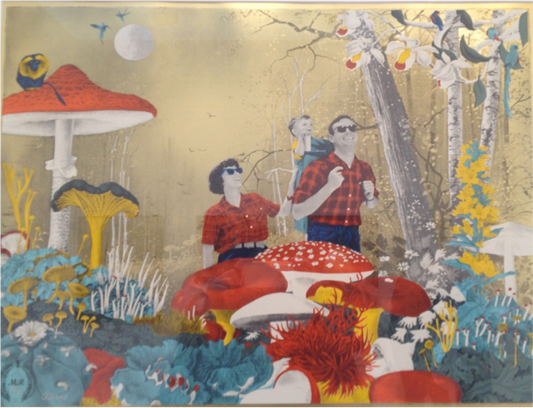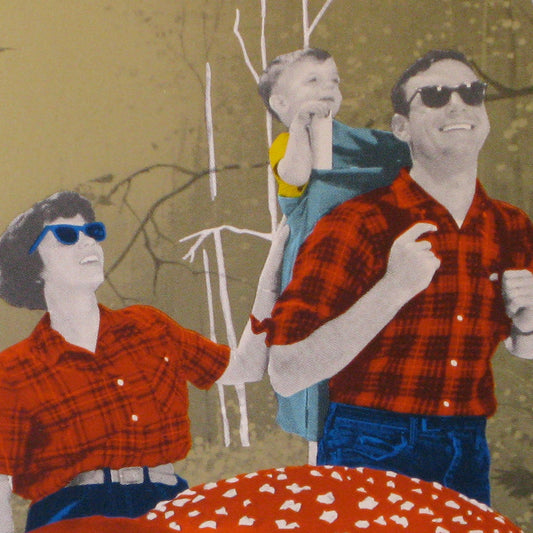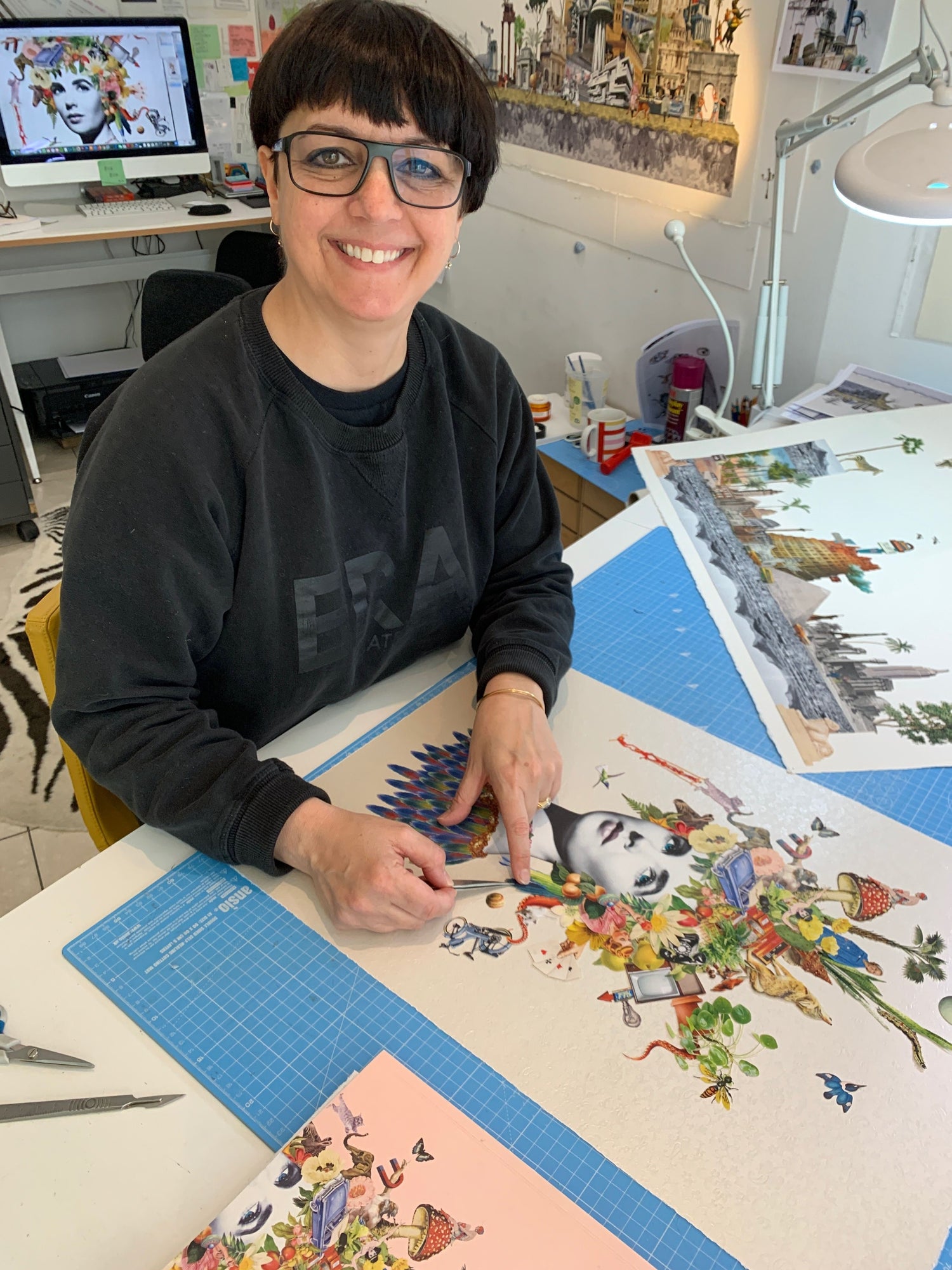-
Maria Rivens | Natural Highs
Vendor:Maria RivensRegular price £210.00 GBPRegular priceUnit price per
Biography
Maria Rivans is a contemporary British artist, known for her scrapbook-style collage aesthetic. A mash-up of Surrealism meets Pop-Art, Maria’s work re-appropriates vintage ephemera to create dreamy realms, which transport the viewer into fantastical worlds of the imaginary, each one suffused with vivid colour, arresting imagery, intricate detail, and finished with a dusting of subtle humour.
Maria studied 3D design at the University of Brighton, before turning to jewellery design and setting up her own workshop. But an aptitude for the visual arts was in her blood: growing up with her Italian family in Essex, hours of her childhood were devoted to drawing and doodling, listening to music, covering her bedroom walls with film and pop heroes, while she soaked up the televisual culture that would come to form her greatest influence.
The visual artists who have defined Maria’s work include: Max Ernst; Frida Kahlo; Robert Rauschenberg; Richard Hamilton; David Hockney; Sarah Lucas; and Tracey Emin. Yet her influences are not limited to the visual arts: music, film and fashion have helped define her aesthetic, with the likes of David Bowie, Vivienne Westwood, Alfred Hitchcock and David Lynch having a huge impact on her practice. Maria’s artwork is known for its unique approach to collaging. Intertwining different film and TV genres - from vintage Hollywood, to 1970s sci-fi, B-movies and TV trash - her work is in a constant dialogue with cultures of the past, reinventing existing film plots and narratives, while spinning bizarre and dreamlike tales. Her use of collage reflects the complex and fragmented world from which the art arises, but an attention to beauty and to harmony of composition gestures optimistically towards the social capacity to piece it back together again. In her pin-up series, Maria reclaims iconic femininity to champion female strength; her exotic and escapist works are often laced with ominous undertones, to remind us of the darker side of human nature; utopian imagery from 1950s pop-culture speaks to today’s obsession with consumerism; while a persistent love of sci-fi illustrates the fact that Maria’s work is always a meditation on the greater question of ‘life, the universe, and everything’.



